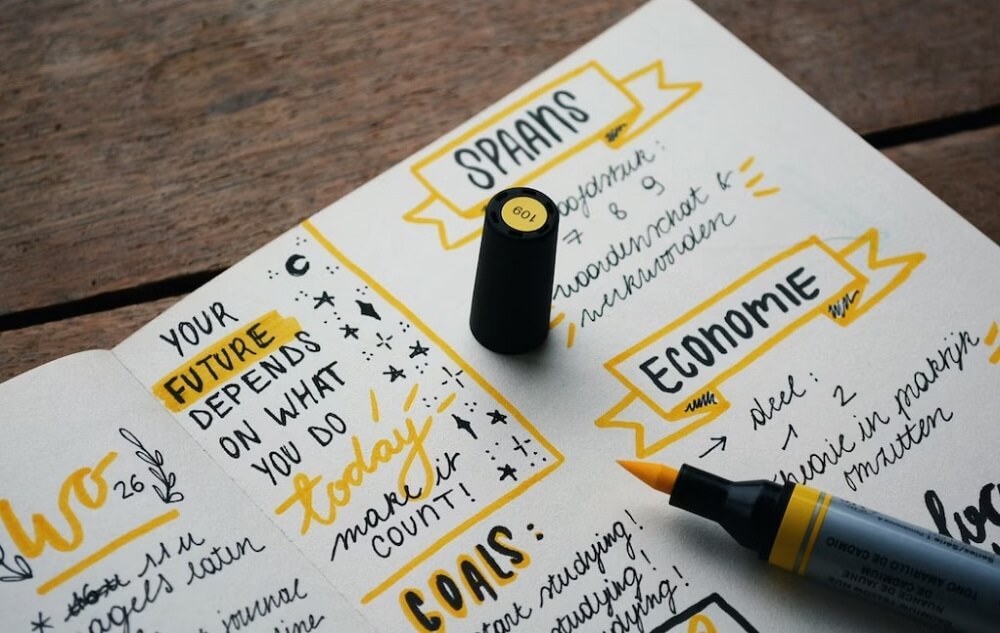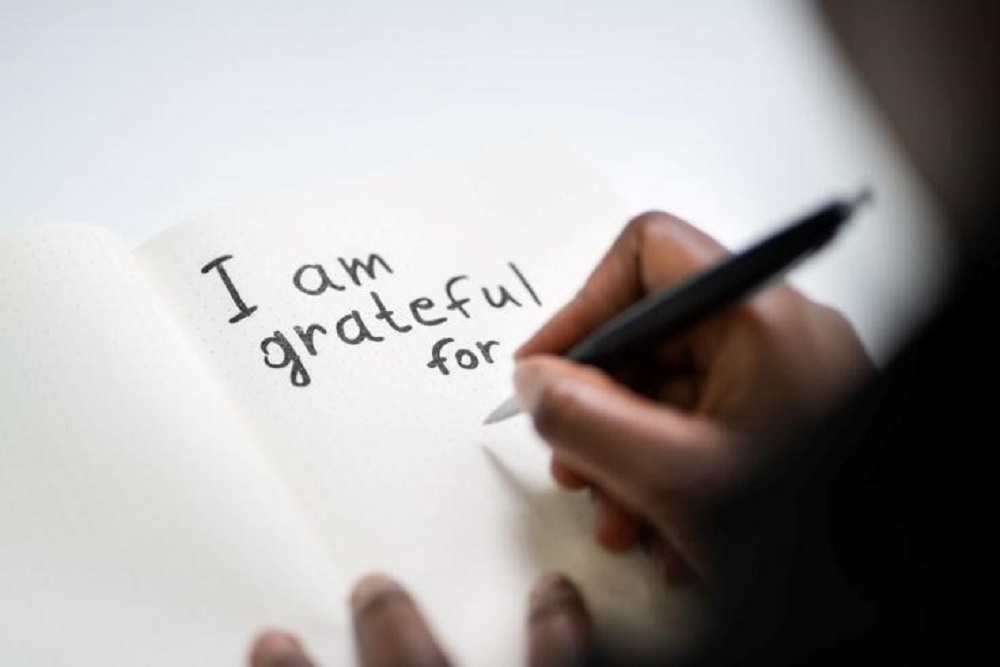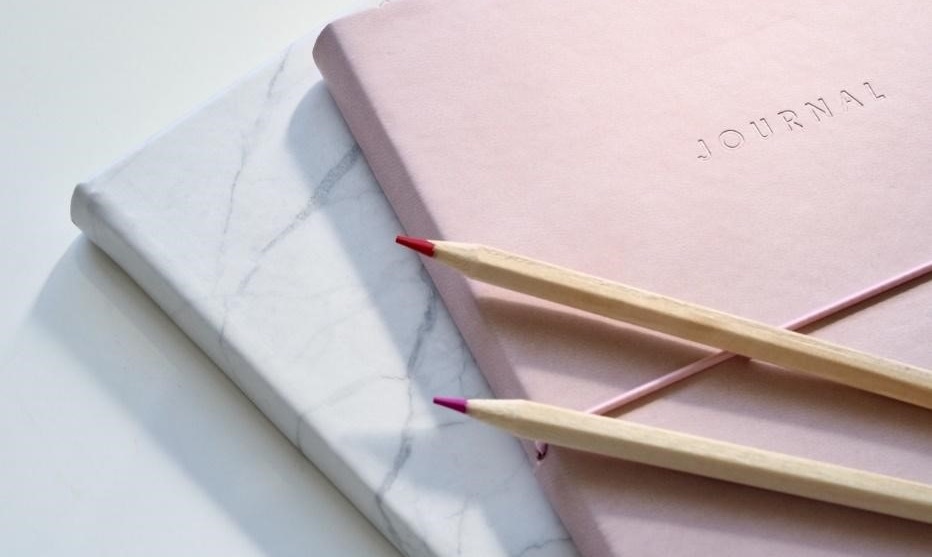Journaling is the process of recording your thoughts and feelings by writing them down. It can be through written words or artistic images. You can keep a physical diary or a digital diary.
Studies show numerous benefits of journaling, including managing stress, gaining clarity, building mental and emotional resilience, etc. This article will explore the different types of creative journaling.
Daily Journaling
Daily journal writing simply refers to the practice of journaling on a daily basis. Daily journaling has various benefits, including increasing your self-awareness, self-reflection, building resilience, and stress and anxiety management. Choose from the different types of journal writing discussed below and set a time for journaling practice each day.
Reflective Journaling
Reflective journaling involves recording your thoughts, feelings, and experiences to promote personal growth, learning, and self-discovery. This kind of daily journal has numerous benefits, including enhanced problem-solving and decision-making skills, reduced stress and anxiety, enhanced self-awareness, and better communication and interpersonal skills. It can also help you to gain new insights about yourself and life.
Reflective journaling can take the form of structured writing prompts, guided exercises, or free writing. You can do it in a journal, notebook, or digitally. It mostly entails looking back at past experiences and events, analyzing them, and exploring their impact on your life.
There are 4 main steps to the reflective journaling style:
- 0bservation. Record the event or experience detailing what happened, your thoughts and your feelings.
- Reflection. Analyze and explore the significance of the event, experience, and your thoughts, emotions, and feelings.
- Interpretation. Derive the meaning of the experiences and explore how they relate to your goals, beliefs, and values.
- Evaluation. Assess the impact of the event on your life and identify if there are areas for improvement.
Bullet Journaling

Bullet journaling is a versatile form of journaling that includes elements such as to-do lists, a diary, and a planner. The bullet journal was developed by Ryder Carroll as a way to help individuals stay organized and improve productivity. A bullet journal is full of blank pages with dots instead of lines.
When bullet journaling, it is recommended to create an index table of contents at the beginning of the notebook and establish a personal system of symbols and shorthand that you will use for each journal entry.
Doing so lets you log tasks and record your reflections easily and quickly. You may also create themed pages such as gratitude log, habit tracker, and reading lists.
Artistic Journaling
Artist or visual journaling is not a practice limited to artists. Anyone can use it in various ways, including expressing and releasing their creative energy, expressing and processing their thoughts and emotions through creative writing, preserving memories, exploring their creative ideas, and managing anxiety and depression.
Artistic journaling involves keeping a visual journal where you use different art forms to express your thoughts, feelings, ideas, and memories. You can use one art form or combine different ones, such as collages, images, paintings, words, and drawings.
The specific goal of artistic journaling is not to create masterpieces but rather to express yourself. It is open-ended art without a target end result. Therefore, you must release any self-criticism or perfectionism to express yourself fully during visual journaling.
For art journaling, gather supplies such as colored pencils, paints and paint brushes, stickers, pens, watercolors, etc. You can journal in a sketchbook, blank notebook, or art journal.
Determine whether you want to start a creative journal as a form of personal expression, creative expression, or for record keeping. Then, start to create in whichever way you are inspired. Allow yourself to experiment and make mistakes. You may later reflect on what you come up with as a way of self-discovery and personal growth.
Video Journaling
It is also known as vlogging or video diary. It is a type of journaling whereby you video record your thoughts, emotions, and experiences on your smartphone or video camera. It enables you to capture both the visual and auditory elements.
You can do video journaling in different forms, e.g., daily, weekly, or monthly vlogs, themed videos, or random updates. You can keep the videos privately or share them on social media or other video-sharing platforms.
To do video journaling, you require a camera. Determine the intention for the vlog to guide your recording. For example, it may be to capture your day-to-day, a specific experience, or express your thoughts and emotions. Express yourself freely and honestly. You may also add visual and creative elements such as music and graphic effects.
Gratitude Journaling

Gratitude journaling is the practice of writing down what you are grateful for. That could be anything, from people, things, and experiences, to personal attributes. The simple technique is powerful in cultivating an optimistic outlook on life and appreciation.
It also builds resilience and can be a source of joy and inspiration. Developing a habit of daily gratitude journaling can shape your view of the world and make you a more positive person.
All it takes is a few minutes each day. Many people do their gratitude practice in the morning to set the tone for their day and in the evening as a way to wind down. But it’s never a bad time to practice gratitude.
Take a few moments to reflect on what you feel grateful for, whether it’s big or small, and write it down. Look for the good even when you’re in a hard situation. By doing this, you will train your brain to notice the good, and soon you won’t have to think about it. Your gratitude will simply flow naturally.
Stream of Consciousness Journaling
This journaling technique involves continuously writing down whatever thoughts come up in your mind. This kind of free writing aims to let your mind wander and express yourself without inhibitions. It promotes creativity and can also be a way to brain dump. This type of journaling is unstructured and with no end goal.
Simply set a timer and get down to it. Eliminate any distractions and keep going until the timer goes off. Let your mind lead you through the process. Do not worry about the logical progression of your ideas in this daily journal. In fact, you can jump from one topic to another.
Affirmations Journaling
Affirmations journaling is when you write down positive affirmations with the aim of self-empowerment, cultivating a positive mindset, or reprogramming your subconscious mind with empowering beliefs. Positive affirmations can also be a reflection of your goals and desires.
Start by identifying an area of your life you want to focus on. It could be health, abundance, work, career, prosperity, success, or self-confidence. Think about how you would like to feel or the behaviors you would like to enforce, then write affirmative statements about it.
The statements should start with “I” and should be in the present tense. You can also find affirmations online and write down the ones that resonate with you.
For best results, journal your affirmations daily. It also helps you to recite, reflect on, and embody them as you write. You may expound on each affirmation to reflect on it further. Adjust your affirmations over time.
Food Journaling
Food journaling entails keeping a record of what you eat and drink daily. This journaling technique is commonly used as a tool to aid in wellness, weight loss, or managing specific health conditions such as food allergies, hypertension, and diabetes.
It improves your awareness of your eating habits, serves as a motivation and accountability tool to help you make healthier food choices, and enables you to identify areas of improvement.
Therefore, you typically record the type of foods you eat and drink, the quantities, and the frequency. You may also record your emotions related to your eating habits and provide additional context where need be, e.g., if you ate out or experienced certain emotions and symptoms after eating the food.
Food journaling can be done in a book or digitally. There are numerous food journals and apps to choose from. Apps have additional features that may not be captured in a physical journal, such as nutrient analysis.
How to Keep a Journal
There are no hard rules on how to keep a journal. It depends on your preference and what works for you. However, below are some guidelines for using these journaling ideas to explore your inner world:
- Choose your preferred type of journaling from the options discussed above
- Decide your preferred format like a notebook, guided journal, workbook, app, or online platform
- Set a time and place for journaling
- Express yourself freely
- Journal regularly and consistently
- Try out other journaling styles and formats
- Reflect and review your progress and adjust as you go
Conclusion
Exploring your inner world enables you to become better aligned with yourself. It also promotes self-awareness and personal development. Through these journaling ideas, you better understand your thoughts and emotions.
Journaling is a powerful way to explore your inner world and express yourself without holding back. As discussed above, there are different types of journaling. Experiment with the different ones to determine which ones work best for you. Journal regularly for best results.


